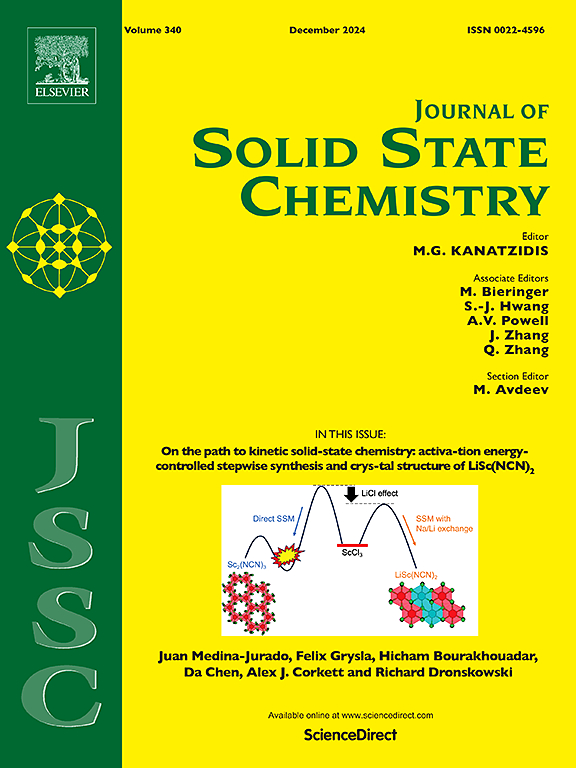Development of iron-based metal-organic frameworks for the efficient removal of industrial dye: Effect of ligands on morphological and adsorption parameters
IF 3.2
3区 化学
Q2 CHEMISTRY, INORGANIC & NUCLEAR
引用次数: 0
Abstract
Recently, the utilization of metal-organic frameworks (MOFs) enhanced the significance of the adsorptive removal of pollutants by several folds. To explore the unmatched potentials of MOFs, MIL-100 & MIL-101 (iron-based MOFs) have been fabricated via a solvothermal process for Orange G dye removal (adsorption-based) from the aqueous system. The adsorption results show that MIL-100 has superior adsorption capacity (357.3 mg/g) in comparison to MIL-101 (206.9 mg/g) via pseudo-second-order kinetics. Moreover, both the adsorbents displayed their effectiveness for the removal of Orange G dye under extreme testing conditions (e.g., varying pH and high salt strength). The interactions between the target dye with the adsorbents have been inferred using three different adsorption isotherm models. Fascinatingly, as per isotherm models, significantly higher qmax values of 540.5 and 321.5 mg/g were achieved using MIL-100 and MIL-101, respectively. The current study revealed that the ligand type is crucial in deciding the MOF properties and their adsorption capacities.

高效去除工业染料的铁基金属有机骨架的研制:配体对形态和吸附参数的影响
近年来,金属有机骨架(MOFs)的应用使其吸附去除污染物的意义提高了几倍。MIL-100 &;通过溶剂热法制备了MIL-101(铁基mof),用于从水体系中去除橙色G染料(基于吸附)。拟二级吸附动力学结果表明,MIL-100的吸附量为357.3 mg/g,高于MIL-101的206.9 mg/g。此外,两种吸附剂在极端测试条件下(例如,改变pH值和高盐强度)都显示出去除橙色G染料的有效性。用三种不同的吸附等温线模型推导了目标染料与吸附剂之间的相互作用。有趣的是,根据等温线模型,使用MIL-100和MIL-101的qmax值分别达到540.5和321.5 mg/g。目前的研究表明,配体类型是决定MOF性能和吸附能力的关键。
本文章由计算机程序翻译,如有差异,请以英文原文为准。
求助全文
约1分钟内获得全文
求助全文
来源期刊

Journal of Solid State Chemistry
化学-无机化学与核化学
CiteScore
6.00
自引率
9.10%
发文量
848
审稿时长
25 days
期刊介绍:
Covering major developments in the field of solid state chemistry and related areas such as ceramics and amorphous materials, the Journal of Solid State Chemistry features studies of chemical, structural, thermodynamic, electronic, magnetic, and optical properties and processes in solids.
 求助内容:
求助内容: 应助结果提醒方式:
应助结果提醒方式:


